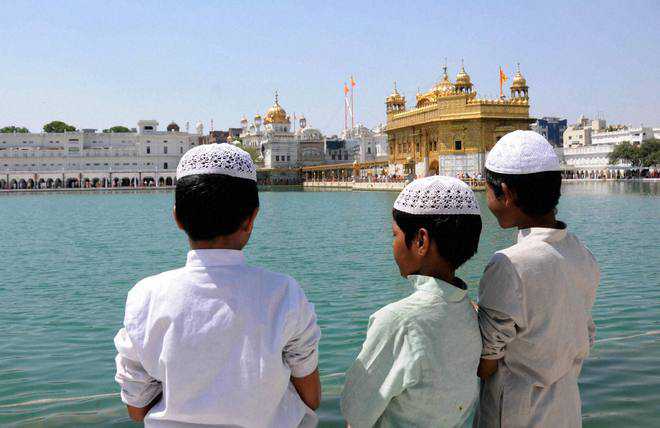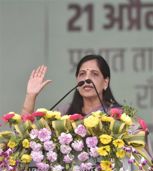
Undivided by faith: The book portrays the true character of the region of Punjab before it was divided by religion and language Photo: PTI
M Rajivlochan
The occurrence of words like ‘pulchritudinous’ and ‘amaranthine’ in the very first pages of a novel forewarn the reader to expect the unexpected. The most unexpected here is a fine eye for historical detail and a great skill in weaving it through the story of five friends whose lives come together after five decades of absence. They had gone through the usual travails of growing up in modern India’s rather weird school system. They had lived through the times when boys still rode Atlas bicycles, waited for their weekly dose of Binaca Geetmala and did not have particularly clear thoughts on what they were supposed to do in the future. The future just happened. Through their memories we share the turbulent, and often bloody, history of the young Indian nation.
In this story we see the true character of the region of Punjab before it was divided by religion and language. A sense of community and strong family ties, marked this period despite the brief time when madness overtook the people on the verge of independence from colonial rule. Essentially, people were caring and still deeply connected with the past.
As the five friends grow up, in the ‘middle years’, each takes a different path, evolves in ways different from each other and yet maintain a tenuous touch with each other. Their adult lives get affected by the dark changes happening in sub-continental polity. The political parts of the narrative are particularly well-developed and many readers would quickly recognise that the histories of five heroes tells us a lot about the political travails of India, especially as seen through the eyes of someone living in Punjab.
At the same time, it is interesting to note that none of the people here rail against the Hindu rate of growth that created a virtually stagnant economy, even while they suffered the consequences of living in an economy that created perpetual shortages and stressed out the easy going population of India, forcing them to be vicious to each other.
As if to match the conditions of stressed-out people, while describing the middle years, the narrative begins to flag a little and loses its humour. Some bits actually become pedantic, as if these were part of a scholarly text book. One such episode is worth quoting at some length: “Deepak also explained to Radhey Shyam about satire and humour in literature. According to him: ‘… In fact, satire [hajv] or lampooning has existed since early times. Literary historians date satire and humour to the pre-Islamic poetry of tribal Arabia’”. Deepak, I thought, if he were interested in hansi and mazak, could have done well to read a little bit of Indian literature. Then he would have known that both satire and lampooning have been part of the land of Punjab, too, and have been so since the earliest times.
Many small nuggets from history, scattered casually around, do make for good reading and are quite informative as well. Though, one did miss the bits that could have poked a little fun at the great people of our times and made them a little more human. Benazir, for example, is described as a former president of the Oxford Union who wore fashionably cut salwar kurtas. She did, that is a fact. But more juicy details would have been telling us that she wore hot-pants. After all, we do expect masaledar descriptions from novelists, though not from historians.
On the matter of history, some care could have been taken. For example, just for the sake of some historical quibbling, Indians in pre-Aadhar times used multiple names and titles that changed over time and sometimes the title itself was the name. Thus, if the emperor Jahangir needed to be shown as someone who also had the names Nuruddin and Mohammad, then the title Beg with the first and Khan with the second would be more accurate. If only the name with which he ascended the throne was to be used then the ‘Beg’ and ‘Khan’ would be dropped along with ‘Salim’, the name with which the prince was routinely known.
Would I recommend this book to a reader of fiction? Caveat emptor, I would remind the potential reader. There are many bits that are quite interesting. But, these certainly don’t characterise this 400-page-long story.



























